Std. 8 Academic Program
Std. 8 Academic Program
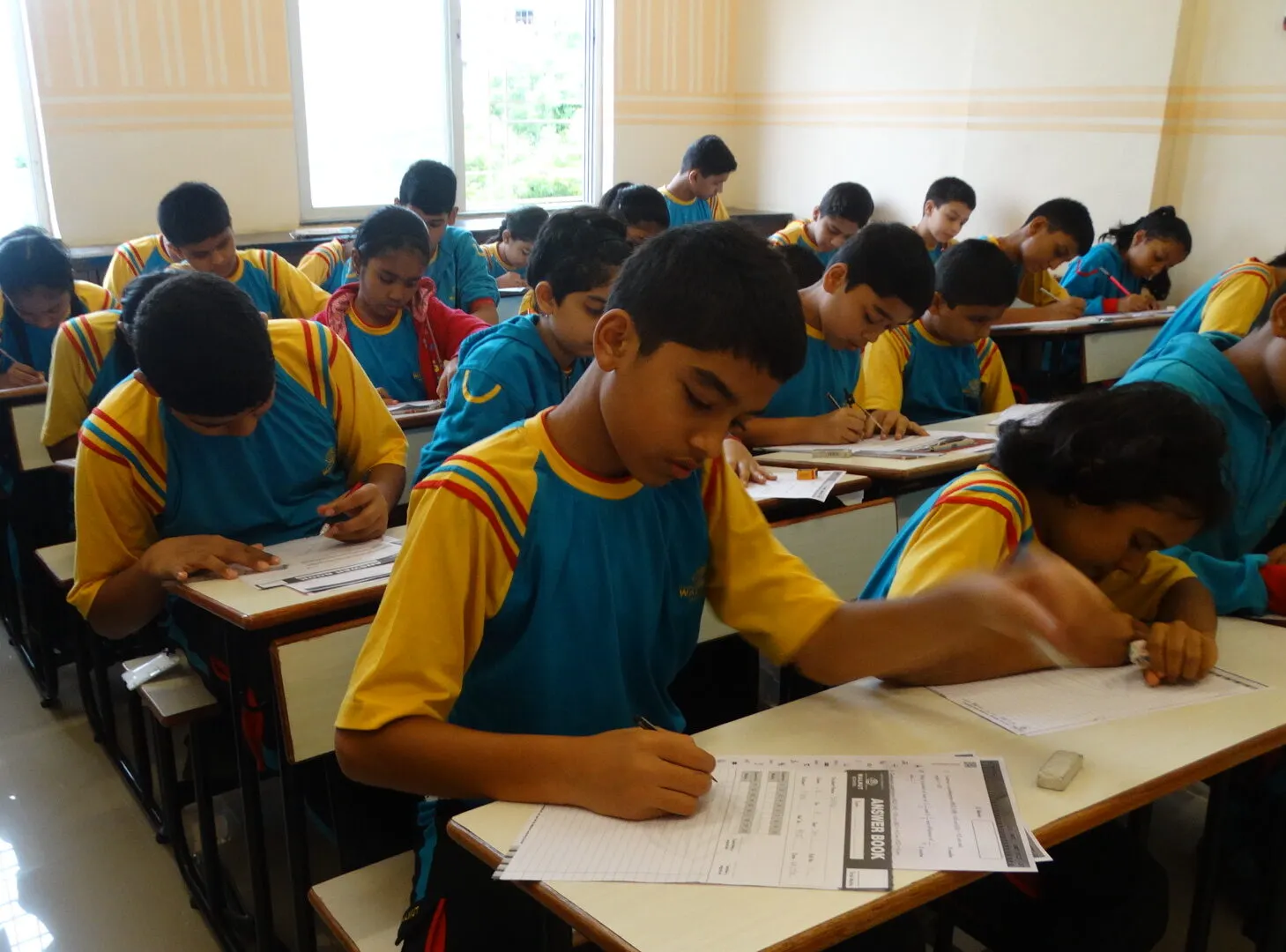
Preparing for the Std. 10 board exams at Walnut School is a well-structured and systematic process. Our journey begins in Std. 8, where we establish a strong foundation for board exam success. With two years of preparation time, students have the opportunity to thoroughly equip themselves for the exams.
Std. 9 and beyond
Std. 9 and beyond
At Walnut School, RTE norms are strictly adhered to, ensuring that all children are promoted from Std. 8 to Std. 9. However, promotion from Std. 9 to Std. 10 is solely based on the students’ exam performance. The school firmly believes that students must earn their promotion through their dedication and hard work. Automatic promotion is not granted, and students are required to prove their knowledge and skills in the exams.
The Std. 10 CBSE board exams cover five core subjects and one skill subject, with comprehensive learning through in-school teaching of concepts. Writing work, including practice exercises and assignments, is primarily done at home, enabling students to reinforce understanding, develop skills, and cultivate self-discipline.
Here’s how the years ahead are planned academically.
Unit – wise planning : Std. 8
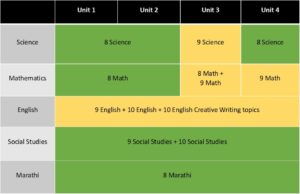
Unit – wise planning : Std. 9
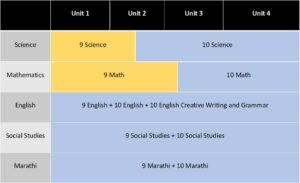
Unit – wise planning : Std. 10
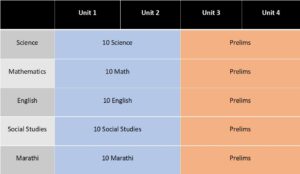
Continuous Evaluations
Continuous Evaluations
Continuous evaluations play a crucial role in the board exam preparation approach. Special ‘try-a-test’ periods have been incorporated into the timetable to assess students’ knowledge and skills. The testing periods are scheduled as follows:
- Math ‘try-a-test’ period begins from Std. 7 onwards
- English and Social Studies from Std. 8 onwards
- Marathi and Science from Std. 9 onwards
During these testing periods, students have the opportunity to familiarize themselves with the exam format, practice time management, and evaluate their own performance. The tests are thoroughly checked by experienced teachers who provide valuable feedback to students for improvement.
The question papers for all the tests, including the ‘try-a-tests’ and regular chapter-wise tests, are designed to match the difficulty level of the board exams. With the aim of challenging students and ensuring they have a strong understanding of the underlying concepts, familiar questions that may have been twisted or unfamiliar questions are added to these papers. It is essential for students to study systematically and consistently on a daily basis to avoid panic during the exams.
All students are actively encouraged to participate in the testing periods, as they are designed to support their studying process. In accordance with this, students whose overall attendance falls below 75% will not be permitted to sit for the exams.
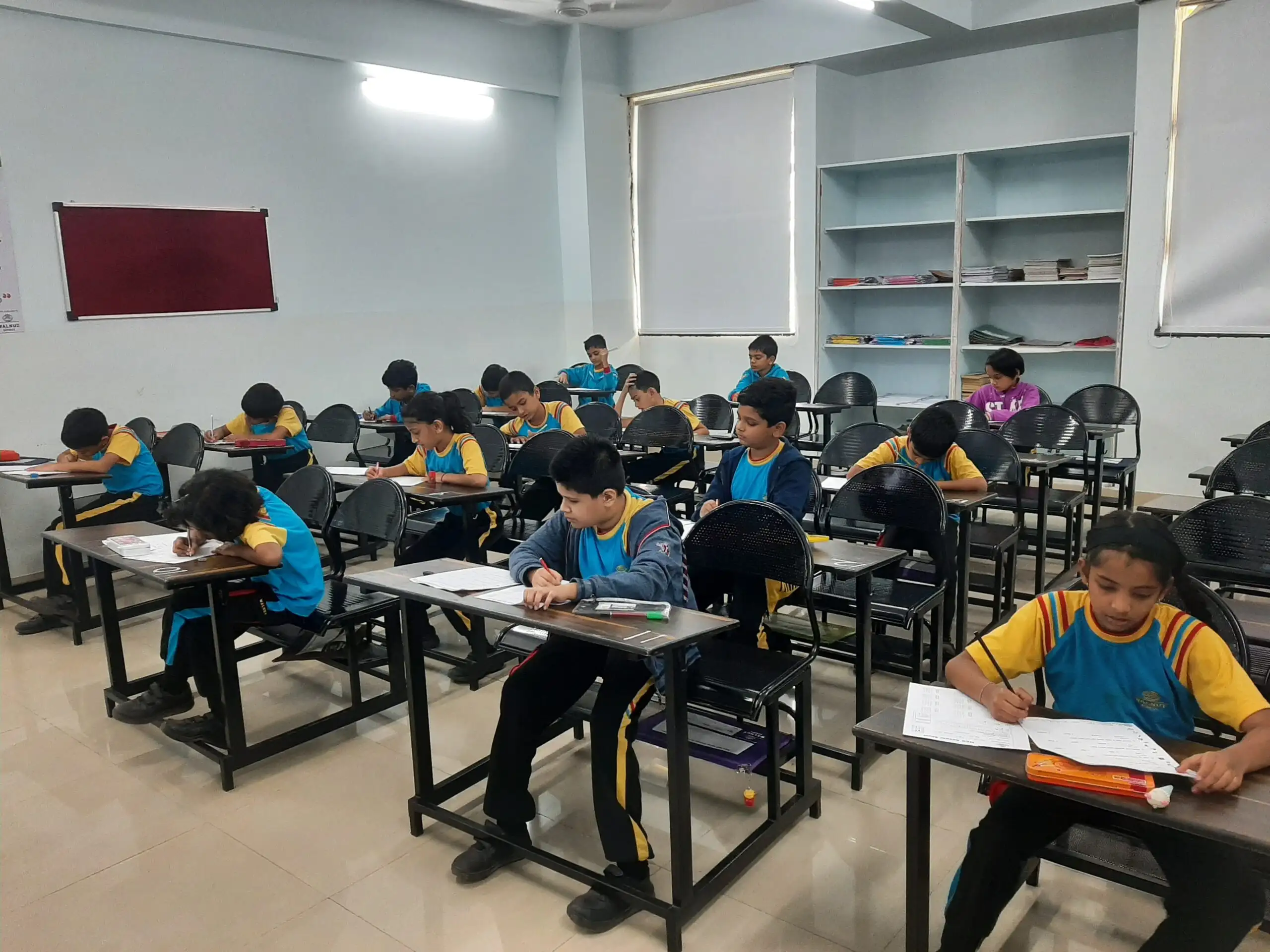
The purpose of the ‘try-a-tests’ is to facilitate studying and give students an advantage in their exam preparation.
To further support the students, regular chapter-wise Test Bytes are released on the Walmiki platform. These Test Bytes are assigned as homework once the chapter has been fully taught. The marks obtained in these tests contribute to the internal assessment for each subject, offering a comprehensive evaluation of the students’ progress.
How will we be preparing for Std. 10?
How will we be preparing for Std. 10?
English
- Early introduction to functional English : From Std. 1 onwards, students are introduced to functional English, emphasizing regular usage of the language. This early introduction enables students to grasp and express themselves in English earlier than their peers. Despite the increase in chapter length, the overall difficulty level of English chapters remains relatively the same from Std. 7 to Std. 10. As a result, we are able to teach the textbooks almost an entire academic year in advance.
- Unseen comprehensions: As part of their practice, students solve unseen comprehensions. The questions in these comprehensions are meticulously designed to align with the paper pattern, enabling students to develop the skill of finding answers in unseen passages.
- Functional grammar: The curriculum incorporates concepts of functional grammar that hold relevance in everyday usage. Students are given ample practice in instinctively completing sentences and identifying errors through the use of multiple-choice questions (MCQs).
- Creative writing: Students are taught one creative writing topic per unit. As they progress, the difficulty level increases, encouraging them to think critically and express their thoughts in English.
- Comprehensive textbook reading: Students read and understand each chapter from both English textbooks starting from Std. 8. This approach ensures that no chapter is rushed through and enhances their understanding.
- Board-format worksheets: The worksheets feature a mix of different types of textbook-based questions, aligning with the format of board exam questions. This prepares students effectively for the exam.
Marathi
- Early Introduction to Std. 10 textbook: The teaching of the Std. 10 textbook commences from Std. 9, specifically starting with Unit 1. This strategic approach enables students to develop early familiarity with the content and concepts, providing them with a valuable head start in their preparation.
- Marathi unseen comprehension practice: To enhance comprehension skills, the Std. 9 Marathi textbook, Aksharbharati (SSC), is utilized for unseen comprehension practice. This approach aids students in developing their ability to understand and interpret unfamiliar passages effectively, thereby strengthening their comprehension skills.
- Mixed grammar practice: Mixed grammar practice is provided to students in order to revise and reinforce important concepts. This approach ensures that students develop a strong foundation in grammar and are able to apply the rules accurately in their written work.
- Creative writing teaching and revision: In each unit, the focus is on teaching and revising creative writing skills. This approach allows students to develop their creativity, refine their writing style, and effectively express their thoughts and ideas.
Science
- Building upon concepts from Std. 7: The syllabus for Std. 8 is designed to build upon the concepts covered in Std. 7. It is important to understand that the learning process is continuous, and concepts from previous years serve as the building blocks for higher-level understanding.
- Thorough teaching of Std. 9 Chapters: The approach at Walnut School ensures that all the chapters of Std. 9 are taught comprehensively during the Std. 8 academic program. This method aims to provide students with a strong foundation and in-depth knowledge of the upcoming curriculum. By covering the Std. 9 chapters thoroughly in Std. 8, students have the opportunity to stay ahead and become acquainted with the content well in advance.
- Clearing basic concepts: The emphasis is placed on clearing basic concepts right from Std. 8. It is recognized that waiting until Std. 10 to begin focusing on these concepts may result in gaps in understanding. By proactively addressing and strengthening fundamental concepts at an earlier stage, students are able to establish a solid foundation for their future learning.
Mathematics
- Consistency in syllabus: Starting from Std. 6, the syllabus remains largely the same. However, certain chapters may introduce new concepts, while others may increase in difficulty. Our approach ensures that students are exposed to both new concepts and challenging topics during the Std. 8 academic program.
- MCQs and worksheets: To enhance understanding and application of concepts, MCQs and worksheets include some questions combining various concepts. These help students develop a comprehensive understanding of the subject matter and improve their problem-solving skills.
- Maximum exposure to combinations of questions: We strive to provide students with maximum exposure to different combinations of questions. By offering a variety of question formats and combinations, we ensure that students are well-prepared to tackle different types of questions in the Std. 10 board exams. Our technology backbone enables us to generate numerous tests on the fly with varying difficulties, across chapters, with different weightage for important questions etc. That gives our students a great platform to get rid of their fear for exams and also to get used to tricky questions.
Social Studies
- Equal emphasis: Social studies comprises four subjects, with each subject’s textbook carrying a 25% weightage in the Board paper pattern. Therefore, no textbook can be taken lightly, and equal emphasis is given to all subjects.
- Comprehensive timeframe: To ensure thorough preparation,1 ½ years are allocated to the completion of the entire portion. This time frame allows for ample time for revisions and prelim exams in Std. 10.
- History: In history , all relevant chapters from both Std. 9 and Std. 10 are taught in parallel. This approach highlights the connections between certain historical events, and the order of chapters in both textbooks has been rearranged accordingly.
- Geography: The concepts covered in Std. 9 and 10 geography textbooks build upon the foundations laid in Std. 6 to 8. Students are exposed to map reading, labeling, and marking exercises to familiarize themselves with the Indian map.
- Political Science: Similarly, in political science, both Std. 9 and 10 textbooks are taught together. Each relevant chapter from Std. 9 is followed by its corresponding chapter in the Std. 10 textbook. This approach facilitates a seamless understanding of political concepts.
- Economics: The economics textbook includes various relevant assignments that engage students in hands-on activities. These assignments are given to enhance students’ understanding of economic concepts through practical application.
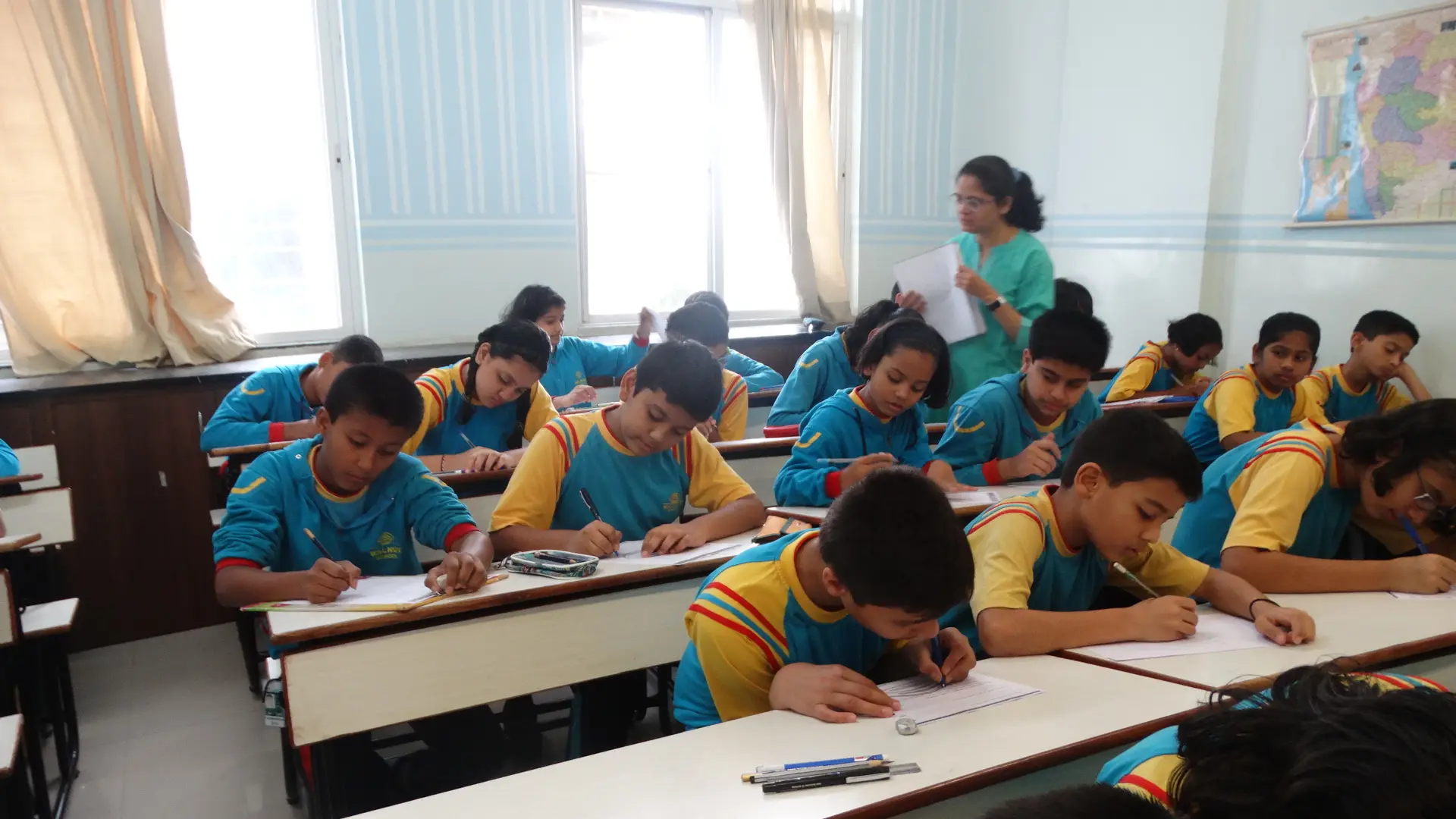
Std. 10 Prelims
- Comprehensive Completion: The entire portion of the Std. 10 syllabus is covered by the end of Unit 2 in Std. 10. This ensures that students have ample time for revisions and preliminary exams.
- Prelim Rounds: After completing Unit 2, five rounds of prelims are conducted to provide students with extensive practice and preparation for the board exams.
- Gradual Progression: Prelims 1 and 2 focus on 50% of the syllabus, allowing students to ease into the full-length exam format. This gradual progression helps them adapt and build confidence.
- Full-Portion Practice: Prelims 3, 4, and 5 are based on the complete syllabus. These rounds provide students with the opportunity to gauge their overall understanding and readiness for the board exams.

The Std. 8 academic program serves as a crucial foundation for preparing students for the Std. 10 board exams. Through a well-planned curriculum, thorough coverage of concepts, regular practice, and exposure to different question formats, students gain the knowledge, skills, and confidence needed for success. Starting early and building upon concepts from previous grades, students are empowered to excel in the board exams. The Std. 8 academic program acts as a stepping stone towards students’ future academic achievements and sets the stage for their success in the boards.